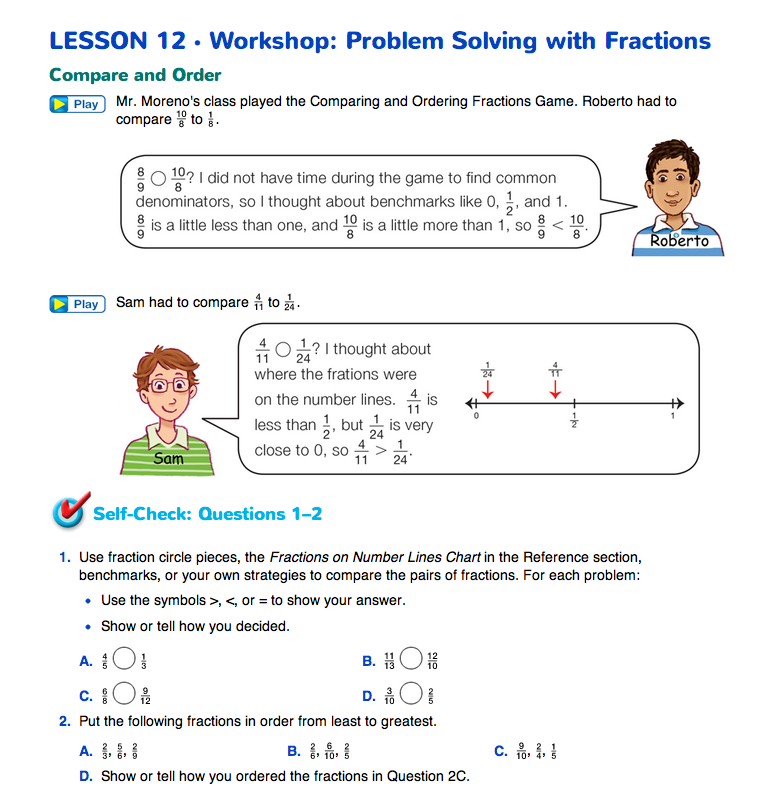Give each student a card with a fraction. Ask students to first represent their fractions with drawings using circles. Then ask them to locate the fraction on the number line. Encourage them to use the benchmarks on the number lines. See Figure 2 for an example card. Ask students to check their work with a partner.
Repeat this process with the other benchmarks. Then ask the rest of the students to join the line in the correct order. Use the questions below to guide a discussion about how students know the fractions are in order from smallest to largest. See the Sample Dialog.
Teacher: Who is holding the smallest fractions? How do you know?
Nila: The five kids at the beginning of the line are all holding fractions close to 0. The pictures don't have much shaded and all the numbers on the number lines are right by 0.
Teacher: That's a good use of the tools, Nila. How do the numerators relate to the denominators?
Ming: One's a lot bigger than the others.
Teacher: Use the terms numerator and denominator in your answer, so that it is clear.
Ming: The numerator is a lot smaller than the denominator.
Teacher: That's much clearer. Which ones are equal to 0?
Ming: 0, 0/2, and 0/12. The ones with 0 in the numerator.
Teacher: Shannon, Frank, David, and Ming, you all had fractions with denominators of one. How did you decide how to order them? Which one is smallest?
Frank: First, we thought that the one with 100 in it would be biggest, but then we thought about splitting a pizza. We wouldn't want just 1 piece of a pizza divided into 100 pieces. So then we said the ones with the biggest denominators would have the smallest pieces, so the order is 1/100 then 1/12, 1/10, 1/8, and 1/6.
Teacher: Which of you are holding the largest fractions in the whole line? What patterns do you see in those fractions?
Tanya: We are at this end of the line. All our numerators are much larger than the denominators.
Teacher: Well said. Give me some examples.
Tanya: 11/6, 12/6, 12/4.
Teacher: Good choices, Tanya. Who is holding fractions equal to 1/2 or close to 1/2 ?
Jackie: John, Keenya, Jacob, Linda, and I are in the middle. Our numerators are either bigger or smaller than 1/2 the denominator.
Teacher: I see where you are going with that, but be more precise. Anything could be bigger or smaller than half the denominator.
Jackie: The numerators are like half of the denominators.
Teacher: All of them are half? Which ones are half?
Jackie: 6/12 and 50/100
Teacher: John, you are holding 5/12 . How did you know where to get in line?
John: 5/12 is like half. Because if you divide 12 in half, that's 6. And 5 is close to 6.
Teacher: In fact, 5 is less than 6. So is 5/12 more than or less than 1/2 ?
John: It's less than 1/2. That's why I am on this side of 6/12.
















